Best TVs for PS5 2025: elevate your gameplay with a perfect PlayStation pairing
Does Sony know best, or is there more to finding the best gaming TV for PS5?
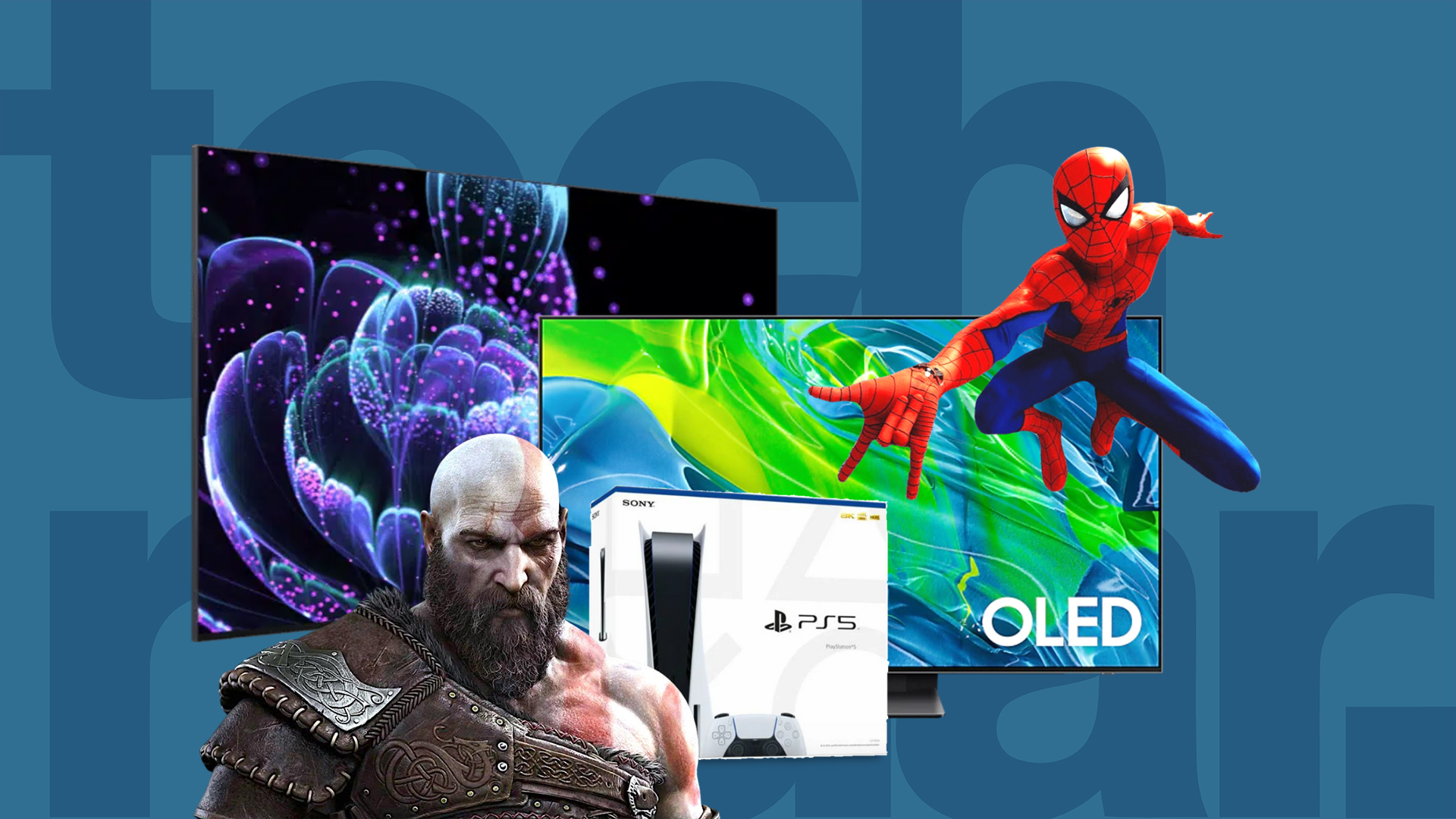
Have a PS5 but an outdated TV? You could be missing out on some of the best features for the latest PlayStation console, such as the 3D audio functionalities Sony has introduced with its new hardware. Although any one of the best gaming TVs will be a terrific match for the PS5, it’s worth noting that some will undoubtedly pair better than others.
As you might expect, many of the best TV options for pairing with the PS5 come from Sony, who have gone so far as to introduce a ‘Perfect for PS5’ lineup of home screens. Each of these feature Sony-exclusive features made specifically to integrate with the PS5 and elevate the overall gaming experience through the console. These features include HDR Auto Tone Mapping, which sees the TV’s HDR settings automatically adjust to optimise the appearance of your games when it recognises you’re linking your PS5 console.
But are the best gaming TVs for the Sony console really these ‘Perfect for PS5’ Sony TVs? Maybe not, as home screens from competitors offer many of the same features and more.
So with this in mind, we’ve put our expertise to work to sort out which TVs are the best to pair with your PS5 and help you elevate your overall gaming experience with Sony’s latest generation console.
Best gaming TVs for PS5
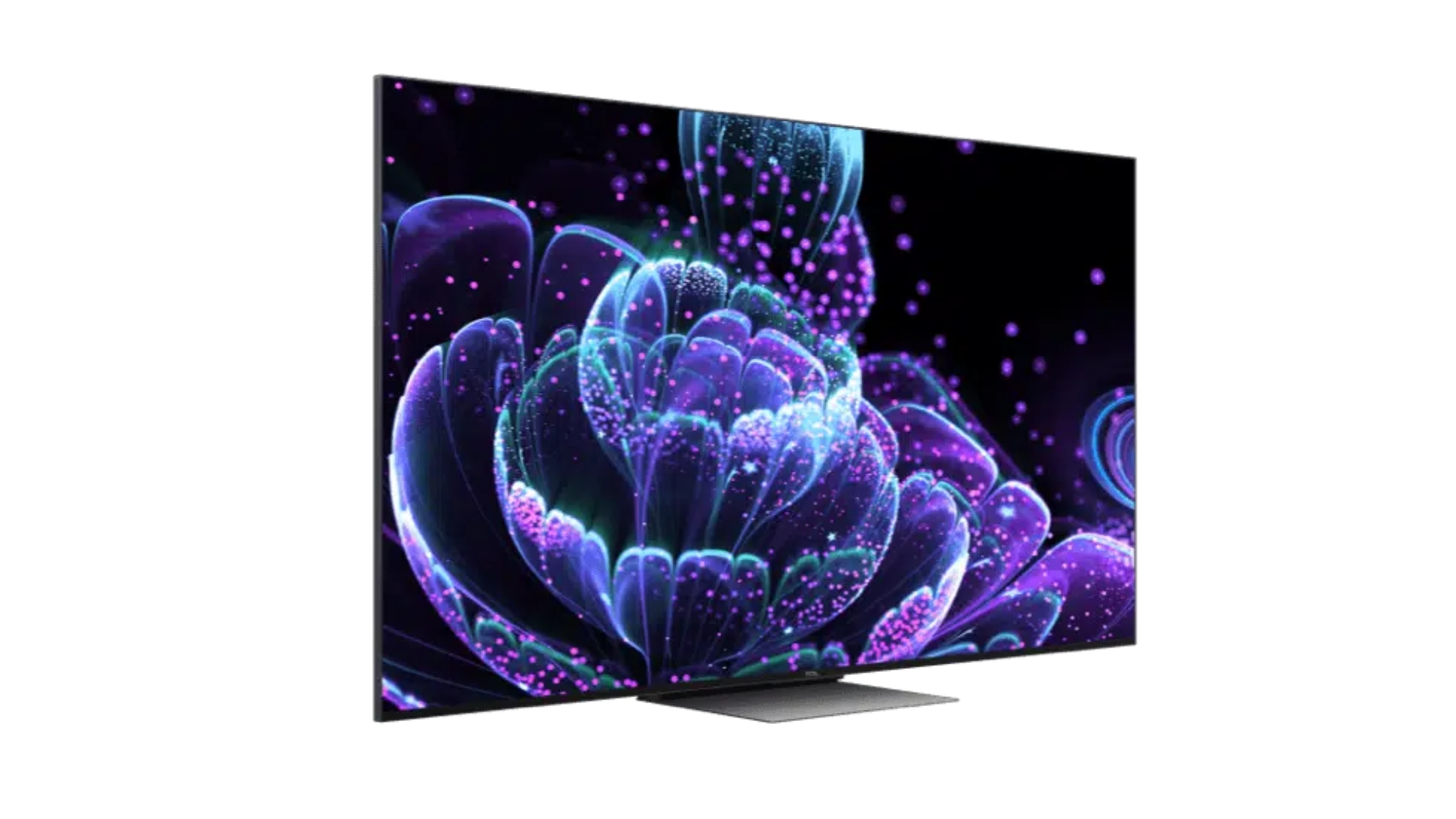
Specifications
Reasons to buy
Reasons to avoid
Surprise! The best TV for pairing with your PS5 doesn't come from Sony, or even from either Samsung or LG. Instead, our pick for the best gaming TV for PS5 is this TCL C835, which is nothing short of an all-around powerhouse. Why?
As TCL often does with its products, the TCL C835 exceptionally balances quality features and performance specs at a price that is much more budget-friendly than its closest competitors. That last detail is particularly crucial, as PS5 gamers having just forked out hundreds on their new Sony console will understandably be conscious of how much they have left over to spend on a home screen companion.
And at a price point that's friendly to a lot of budgets, the TCL C835 offers a lot to like for the cost-conscious consumer looking to get the very best bang for their buck particularly where gaming is concerned. Its use of Mini-LED backlighting is the best example of how little the C835 compromises when compared to premium competitors despite its lower price, offering brightness to 1,500 nits that beats out OLED capabilities. The thousands of tiny LED lights in locally dimmable zones, ranging from grouping sizes starting at 240 in the 55-inch model and up to 360 in the 75-inch, also add considerable heft in the C835's ability to compete even at its low price point. As we wrote in our review: "[This] LED light excites a layer of quantum dots to deliver RGB colour with a claimed full 100% of the DCI-P3 space, greater even than the latest QD-OLED panels."
The TCL C835 also manages to offer HDR10+ as a point of difference to many of its premium competitors, including those in Sony's 'Perfect for PS5 lineup', and this gives it another edge in the discussion of best TVs for pairing with your PlayStation console. While HDR10+ isn't dramatically superior to HDR10, it does nonetheless offer superior picture performance capabilities that are well worth consideration when discussing a home screen to play the latest PS5 exclusives on.
And elsewhere what the C835 offers gamers at its price is no less excellent, with VRR support up to 120/144Hz, Auto Low Latency Mode (ALLM) and Clear Motion Rate (CMR) keeping input lag down to 6ms to provide smooth and lag-free onscreen visuals. The build of the TCL C835 is somewhat thicker than most other competitors, but given the same can be said of the PS5 (and the Xbox Series X, for that matter), this isn't likely to be too much of a hindrance, if at all.
Read the full review: TCL 55C835 4K Mini LED TV

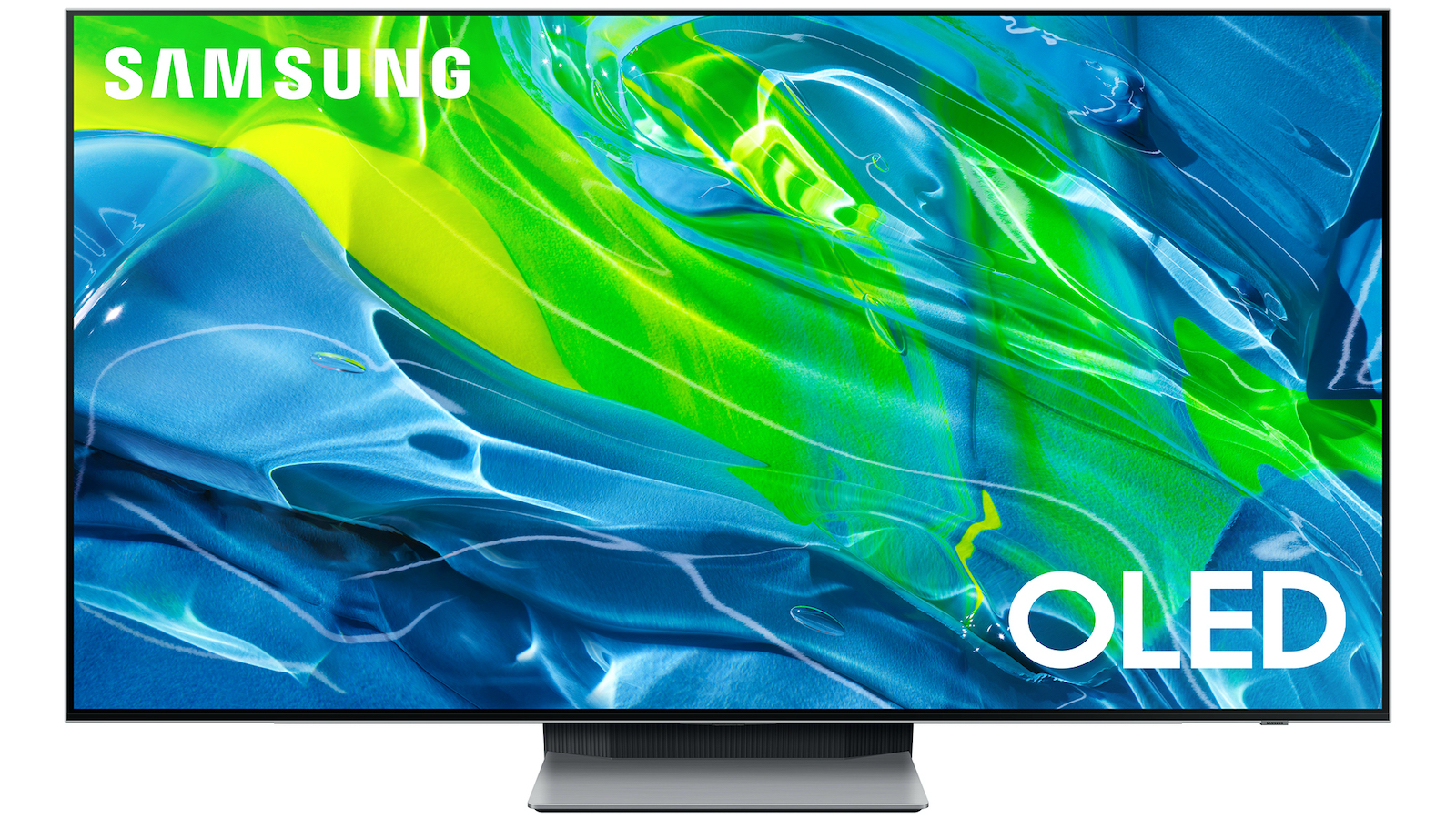
Specifications
Reasons to buy
Reasons to avoid
If you have more cash to splash, this Samsung S95B might be the better choice for you than any other TV on the list as it offers sublime picture quality, dynamic colours and an eye-catching array of gaming features.
Samsung's QD-OLED display featured here in the S95B combines the famous self-emissive properties of OLED with the brightness and colour range potential of QLED, resulting in superb picture quality and exceptional brightness with better blacks and contrast. As we said in our review, "we're looking at a TV that has had the kitchen sink thrown at it, with Samsung's latest AI-inspired picture processor, a massively comprehensive and re-designed Tizen-based smart system, the latest gaming features, and even, despite the ultra-slim design, a clever object tracking sound audio system".
And for gamers there is even more joy to be found. Four HDMI ports feature with the S95B, with each of them supporting 4K at 120Hz and including VRR and ALLM. Better yet, the primary source of power under the hood of this one in Samsung's Neural Quantum Processor utilises multiple neural networks to instantly analyse and optimise what you see on screen. That means that whether it's gaming, streaming or upscaling to 4K from HD sources, the S95B's NQP has you covered.
The built-in sound system is also impressive for such a slim set, with Dolby Atmos and Samsung's Object Tracking tech for positional audio - something that will particularly appeal to PS5 gamers looking to get the best out of their console's 3D audio ambitions.
It'll cost you, but if price isn't a concern for you this Samsung S95B is likely the best TV to pair with your PS5.
Read the full Samsung S95B OLED TV review

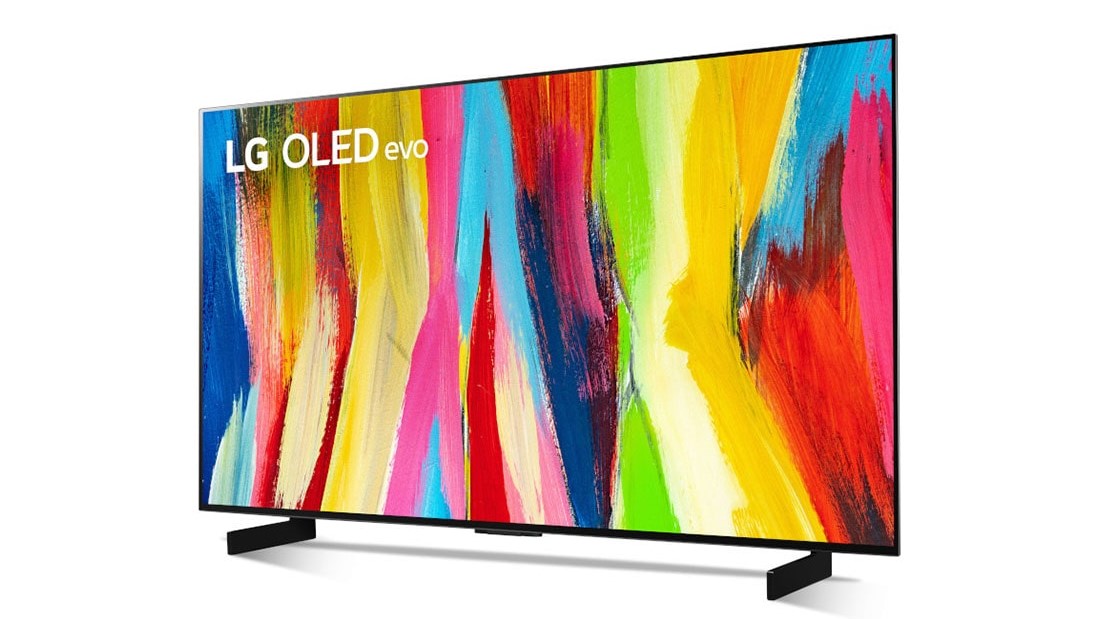
Specifications
Reasons to buy
Reasons to avoid
The best TV overall and the best gaming TV is, surprisingly, not our pick for the best TV for PS5. Sure, the LG C2 is a TV that is nothing short of exceptional, but that being true means it comes with a hefty price tag and it's our opinion that there are some better options to consider who balance slightly lesser performance specs but at far friendlier price points.
Still, the LG C2's 4K OLED display is without doubt an absolute marvel, delivering exquisite black levels, vibrant colours and a dynamic overall picture performance that allows its quality to maintain across every task you'll throw at it. The new Alpha a9 Gen 5 processor in 2022's update to the C2 models is the real MVP here, boosting object enhancement and dynamic tone mapping. Audio for the C2 out of the box is also excellent for a home screen, boasting ‘virtual surround sound’ (ie. a good fit for the PS5), with the TV also capable of upscaling stereo content into 7.1.2-channel sound.
As for where and how the C2 excels for gamers, the inclusions of FreeSync, G-Sync and standard VRR right out of the box are a solid start. And with native 120Hz refresh rate and HDMI 2.1, PS5 owners can be assured of getting the maximum resolution and frame rate for their prized console. The new "Prevent Input Delay" setting is also a handy addition for gamers, although the C2's lack of HRD10+ is a disappointment at its price.
There's almost no chance getting your hands on an LG C2 for your home will end in disappointment, as we've picked it out as the best option elsewhere for very good reason. But considering its price and knowing how much you've already paid for your PS5, we still think there's better.
Read the full LG C2 review

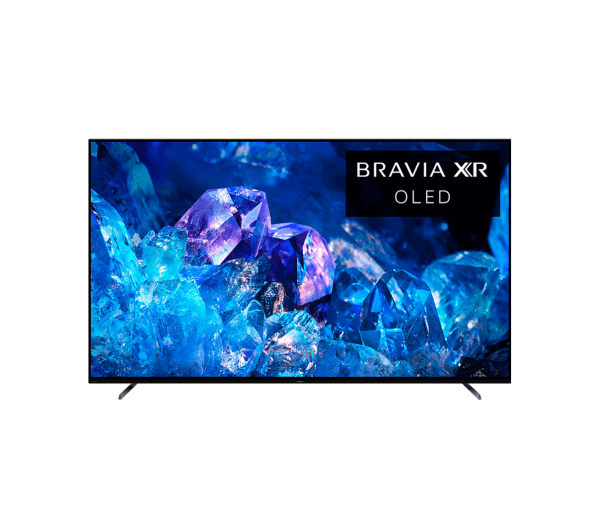
Specifications
Reasons to buy
Reasons to avoid
This is Sony's mid-range OLED TV, meaning of course that it offers less advanced quality than higher-grade Sony OLEDs (such as the Sony A95K ). But its more approachable price point allows it to surpass these other Sony OLEDs for the purposes of this list, while matching their abilities to pair seamlessly with the PS5 particularly.
With 4K 120Hz and VRR support over two HDMI 2.1 ports and ALLM achieving input lag as low as 12ms when we tested it. And when paired with the PS5 particularly, the A80K adds Auto HDR Tone Mapping support, meaning that the PS5 will adjust its HDR output to match the exact capabilities of the screen and ensure you always get the best-looking image.
Yet the A80K's quality doesn't begin or end with its support for the PS5 and gaming overall, as we summarised in our review: "The Sony A80K offers all the best things you expect from an OLED TV".
And while this is true, the A80K also does enough as a Sony product to elevate it above many of its OLED competitors, such as with the inclusion of Sony’s Acoustic Surface Audio+ tech. This tech works to literally vibrate the screen in order to make sound, while dual subwoofers mounted to the TV's bottom and Dolby Atmos decoding with 3D surround upscaling also elevate the audio to make the purchase of an additional soundbar totally unnecessary for most consumers.
Its brightness fails to match that of others above it in this list, and doesn't include HDR10+, but does offer an infinite contrast ratio. This especially comes into play with its ability to display 'true blacks', measuring at an exceptional 0 nits when it was supposed to show blackness during our testing. That's a significant boost for picture quality overall, and if you've got a PS5 in particular the Sony A80K is an excellent choice.
Read the full Sony A80K review

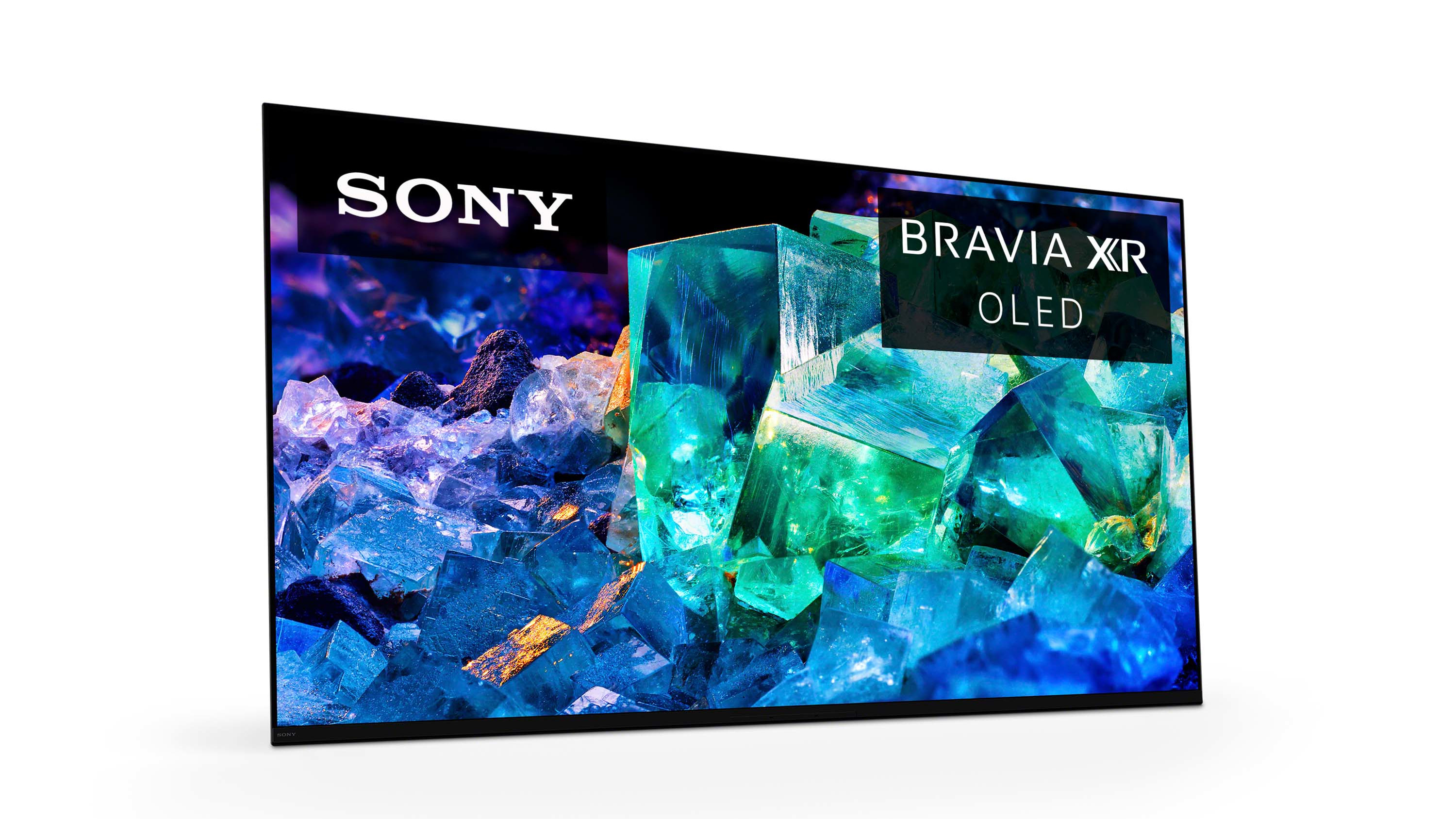
Specifications
Reasons to buy
Reasons to avoid
Nine times out of ten, premium is going to cost you a premium price, and the Sony A95K is a prime example. When we tested the Sony A95K, Sony’s flagship, next-gen QD-OLED TV, we were so impressed by the picture we wrote in our review that it delivers “arguably the most flat-out beautiful images we’ve seen from a consumer television.”
That’s no exaggeration. Thanks to a combination of its excellent Cognitive XR processor with a new Quantum Dot OLED screen, the picture quality is truly outstanding and might be better than that of any other option here.
But as we know, image alone does not make for a perfect gaming TV, so how does the Sony A95K fare? Well, there’s a lot for gamers to love here, including 4K images at 120Hz frame rates and variable refresh rates. The Sony A95K is also a part of the 'Perfect for PS5 lineup', so boasts all the related features when paired with the PS5.
Auto Genre Picture mode also features here, as what is essentially Sony's version of the Auto Low Latency Mode HDMI 2.1 feature enabling TVs to switch in and out of their low-latency game picture presets automatically as a console or PC switches between game and video sources.
The A95K isn't all wins across the board however. For one, it only has two HDMI 2.0 ports, a bitter disappointment for a TV at this price. There's no HDR10+ support either, another surprise pitfall with the A95K considering how much it will set back your budget, although maybe not necessarily a dealbreaker.
Is it a great TV? It's a great TV. Is it a great TV for pairing with the PS5? Absolutely. Is it the best? At that price point, no it's not, but still a worthy contender regardless.
Read the full Sony XR-A95K review

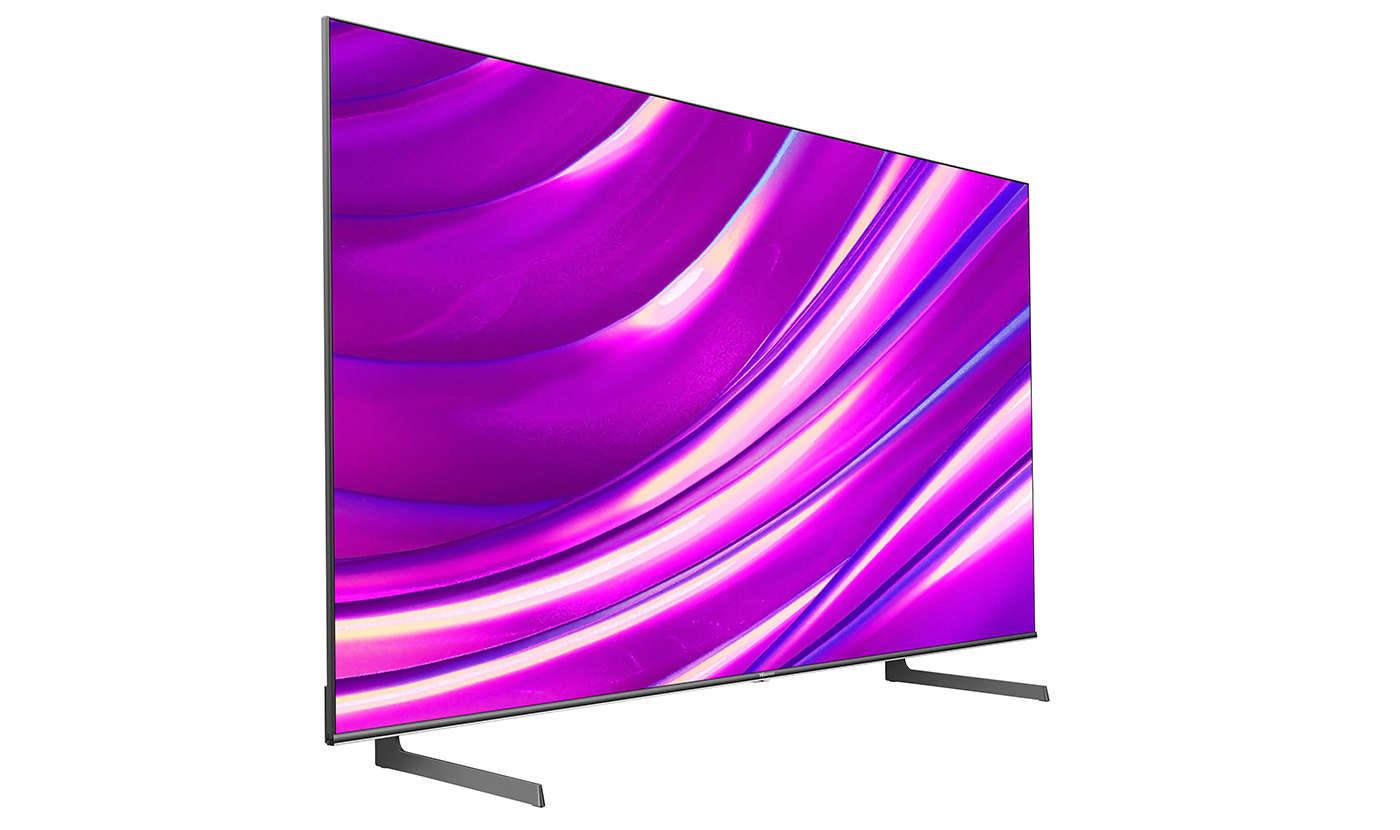
Specifications
Reasons to buy
Reasons to avoid
The Australian edition of Hisense's U8H range, the U8HAU is very similar to the TCL C835 in this list above it with its offering strong performance quality and features at a budget-friendlier price point. Being a Mini-LED TV (also like the C835), it boasts brightness levels rivalling or surpassing even many OLED TVs, while also includes Quantum Dot technologies to elevate colours.
The Hisense U8HAU also includes local dimming zones to give it extra strength in delivering deep blacks and shadows, although suffers slightly for this during arduous picture tasks with some backlight blooming.
What the U8HAU offers for gamers at this price point is where it really excels, featuring Game Mode Pro via HDMI 2.1 for 4K@120Hz, VRR support via AMD FreeSync Premium and ALLM. It also boasts an ability to adapt picture quality up to HDR10+, something that not all the best options in this list can claim.
Audio performance may not be its best strengths though, with sound quality best described as average, so investing in one of the best soundbars may become necessary to get the best out of this Hisense screen. This is also what sees it fall this far on the list of best TVs for PS5, as its ability to pair with the 3D audio ambitions of the PS5 fall short of those above it.
Regardless, the Hisense U8HAU is a solid option for pairing with the PS5 and on the right day (at the right price) might still be the perfect choice for you.
Read the full Hisense U8H review (some features may differ between regions)

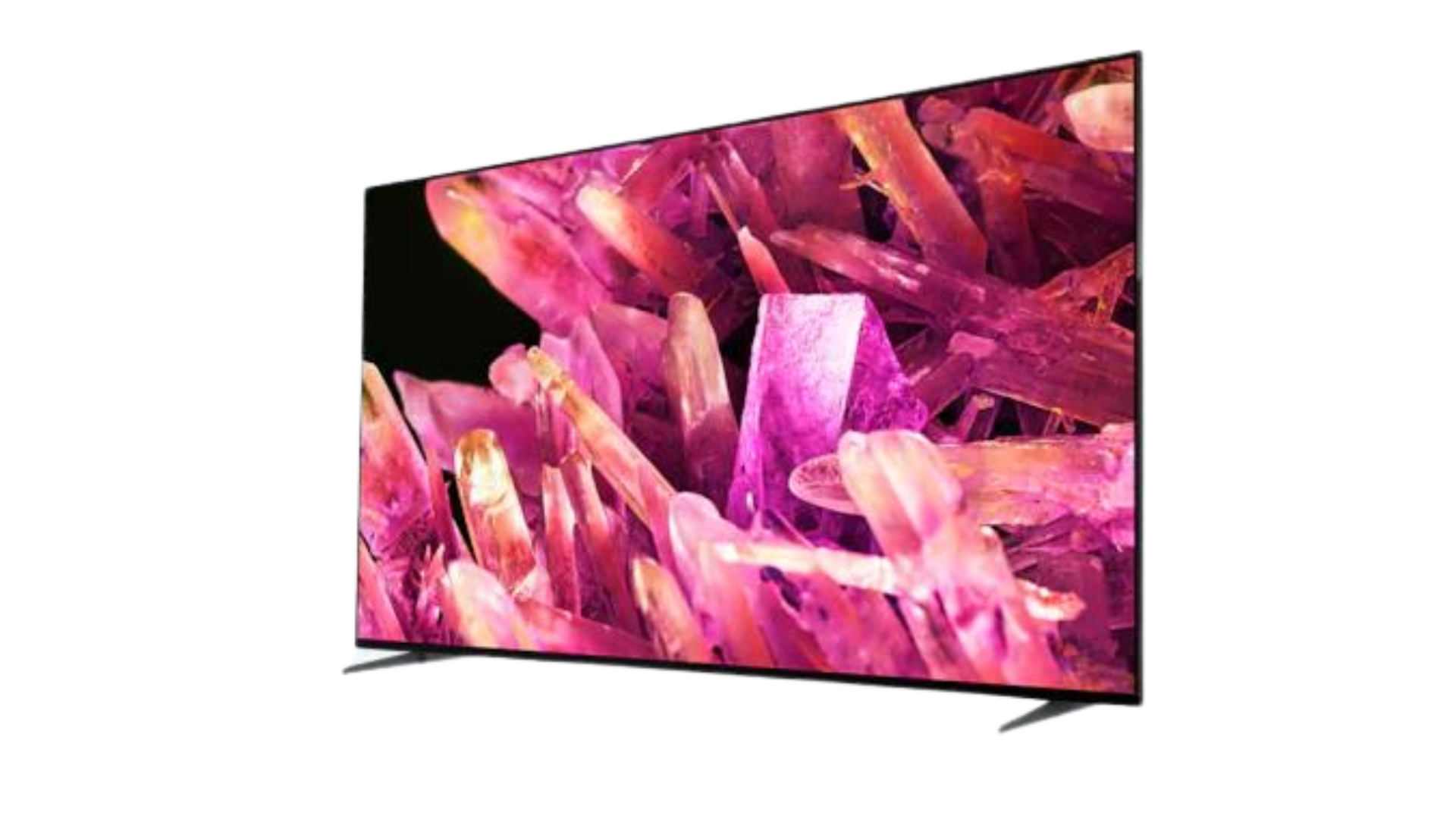
Specifications
Reasons to buy
Reasons to avoid
The Sony X90K is an excellent value TV, offering high quality performance for its price point. It has a full-array LED backlight, which features local dimming, resulting in deeper blacks. Paired with the LCD panel’s quantum dots, colours also find themselves with a handy boost, on top of brightness that may not match the very best but remains solid regardless.
And the X90K arguably shines brightest as a gaming TV, especially for PS5 owners. The X90 has a fantastic suite of gaming features, including 4K/120Hz video support (available only on two of the set’s four HDMI inputs), variable refresh rates (VRR) and auto low latency mode (ALLM). Input lag as measured by our 4K test meter was also 13.8ms, a very good result though not quite matching some of the other options included above it here.
X90K TVs are also a part of Sony's Perfect for PlayStation 5 screen range, offering Auto HDR Tone Mapping and Auto Genre Picture Mode when paired with the PS5 to fully optimise the screen's image for gaming.
This is a great gaming TV, especially for the price, and might even be worth a few spots above where it lands on this list if it were to land a discount on top. So by all means keep your eyes peeled.
Read more: Sony XR X90K review
Best TVs for PS5: FAQs
How important is audio in the best TV for PS5?
From the get go, one of Sony’s proudest features packed in with the PS5 is the integration of ‘3D Audio’. It’s supported by the PS5’s in-built 3D audio engine (known as Tempest) and designed to provide immersive, object-based 3D sound in games to give an impression of players being surrounded by sound.
Sony’s 3D audio technology for the PS5 differs from the 3D audio offered by the likes of Dolby Atmos. For the PS5, Sony has expanded on the audio tech it had first developed for its first VR headset, using object-based spatial sound technology as a way to enhance overall audio perspective. In short, Sony wants PS5 gamers to hear sounds in-game as they would in real life.
So audio must be a hugely important consideration when selecting the best gaming TV for PS5, right? Absolutely, but maybe no more so than for any other console. Regardless of what console you own, if you’re looking for the highest quality gaming experience you should already have your eyes on getting your hands on one of the best soundbars.
While all of the TVs above offer solid to excellent audio support, a quality soundbar is a must if you’re looking to get the most out of the PS5’s 3D audio. If you’re less fussed about this and happy with quality sound a few steps short of full immersion, all of the above TVs’ native audio should suit you just fine.
What makes a quality gaming TV?
If you’re seeing terms like Variable Refresh Rates, Auto Low Latency Mode and HDMI 2.1, you’d be forgiven for wondering just what it all means. So to help you better understand what it is and why it matters when selecting a gaming TV, we’ve defined the relevant terms for you below:
Frames per second (FPS):
Video as a technology works through the capture and display of still images at various rates per second, with frame rates, or FPS, a measure of how many times the image is updated each second on screen. As a general rule, the greater the FPS, the smoother a game will play. But not every TV is able to match the FPS your console or PC may be able to generate, making understanding them particularly important when it comes to gaming. It is also important to note that frame rates are not the same as refresh rates, which we’ll explore below.
Variable Refresh Rate (VRR):
Before the days of variable refresh rates, games were usually locked at a maximum of 60Hz - or the equivalent of 60 FPS. That not only hindered the performance capabilities of your gaming machine, which may well be powerful enough to reach much frame rates than 60, but it also meant the image itself might occasionally show glitches known as ‘tearing’ as the console and TV struggled to sync the signal.
VRR came first to the PC, where it’s known as G-Sync (Nvidia’s tech), or Adaptive Sync (an open standard which AMD also brands as ‘FreeSync). It allows the output of the console - which can vary immensely, often dipping down to below 60 FPS, and as high as a few hundred FPS - to be matched exactly by the TV. So - every single frame your console generates is displayed at that same moment on your TV, instead of being forced into 60 FPS on the TV, which results in the aforementioned glitching.
If your TV has VRR, it may well be marketed as AdaptiveSync, FreeSync, or even G-Sync. If you have any of these you’re good to go, and just need to make sure this feature is enabled on your TV’s menu (usually in Game Mode).
The end result is gaming that’s buttery smooth even during fast-paced movement, free of graphical glitches, and is much less likely to induce motion sickness.
Auto Low Latency Mode (ALLM):
The moment you press a button on your pad, or turn the wheel of your sim car, or make any input - that signal has to travel from the controller to the TV, be processed by the TV, and translated to a response on-screen. That delay (which we call lag, or latency) is tiny - a few dozen milliseconds at most - but it’s enough to sometimes make you feel an odd disconnect with the game and what you’re doing.
ALLM solves that by automatically switching to a low-latency mode when gaming where the lag is reduced to an absolute minimum, making you feel more in control, and the gaming experience more natural.
The fancy name obscures what is actually just a feature indicating that your TV has the ability to recognise when it’s being asked to pair up with a gaming console and adapt its output to the demands of gaming and ensure best possible performance.
High Dynamic Range (HDR):
Believe it or not, there is a whole new world of colours and colour variations beyond the colours of the rainbow, with variations of white (light) and black (darkness) being relevant to video content including video games. HDR is simply an indication that a TV boasts the ability to display a wider range of colours and shades, allowing it to display your games at their best through clearer, more dynamic colours and brightnesses as well as deeper shadows.
The two most common HDR formats are either HDR10 or HDR10+, with HDR10+ considered to be the superior of the two as its name would suggest.
If your game supports HDR, and it will need to, then your HDR-capable TV will look absolutely gorgeous, with sunlight so bright you almost feel your eyes burn, and colours so rich and beautiful the game world becomes stunningly real.
HDMI 2.1:
HDMI is simply the designation for the connection technology responsible for transmitting from Point A (your console) to Point B (your TV), with this HDMI technology offering superior integration with VRR, ALLM and the frame rate demands of your favourite video games.
2.1 is the very latest HDMI standard, and it allows higher resolutions at higher frame rates, with HDMI 2.1 able to display a 4K picture at over 60Hz. HDMI 2.1 is a very new standard, and it’s only starting to appear on devices now. Much more common is the older HDMI 1.4a standard, which limits 4K gaming to just 30Hz (or FPS). So, getting a TV for gaming with HDMI 2.1 is an absolute must. Note you will need an HDMI 2.1 compatible cable for the magic to happen, and your console or PC must also be able to output a HDMI 2.1 signal.
Do I need an 8K TV?
On paper, 8K sounds pretty good, and with the power of the latest games consoles surely they must demand the latest resolution technology, right? Not quite. While the PS5 and Xbox Series X do have compatibility support with 8K and the power to output 8K content built-in, neither demand this resolution. In fact, game developers themselves generally aren’t working with 8K resolution in mind.
By all means, in 3-4 years time we could be seeing games demanding 8K, but it’s very much a non-essential right now that you’d be paying more for unnecessarily.
How we test
How we test the best gaming TVs
Why you can trust TechRadar
Read the specs and marketing claims of TV makers and they often over promise on what the TV can really do. That's why we've extensively tested all of the best gaming TVs in this list to ensure they work well and deliver on their next-gen gaming specs.
What that means is we'll publish the official specs from the TV manufacturer, like the input lag or refresh rates on offer, then tell you ourselves whether the TV lived up to them in practice.
To do this, we tend to review TVs with a range of different content. Of course, next-gen gaming takes priority in this guide, but we imagine you'll also want to know what movies and TV shows are like to watch as well.
That means as well as testing for all of the key specs you need in a gaming TV, like refresh rates and HDMI connections, we're also looking for good picture quality, vibrant colours and viewing angles to suit all kinds of rooms.
Sound is less of a priority with most gaming TVs as you'll get the best experience from gaming headphones or a soundbar, but it's always good to know you'll get a decent built-in experience. Which is why we've also detailed what it was like to listen to these TVs without additional devices, too.
As we've reviewed many TVs over the years – and many of the best gaming TVs – all of our testing isn't done in isolation, but takes into account the performance and specs of every TV that's come before it.
You can read about how we test, review and rate any product on TechRadar if you'd like to know more.
Get daily insight, inspiration and deals in your inbox
Sign up for breaking news, reviews, opinion, top tech deals, and more.

James is a senior journalist with the TechRadar Australia team, covering news, analysis and reviews in the worlds of tech and the web with a particular focus on smartphones, TVs and home entertainment, AR/VR, gaming and digital behaviour trends. He has worked for over six years in broadcast, digital and print journalism in Australia and also spent time as a nationally recognised academic specialising in social and digital behaviour trends. In his spare time, he can typically be found bouncing between one of a number of gaming platforms or watching anything horror.